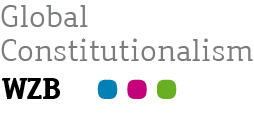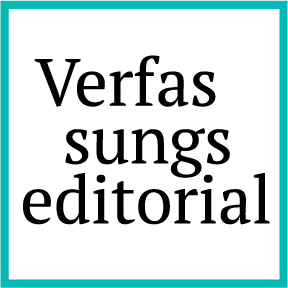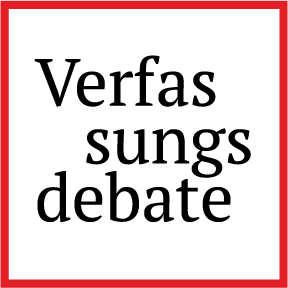The Legal Authority (or Lack Thereof) for Trump’s Tariffs
The professor in my introductory economics class at Stanford, who had recently moved from another university, once teased our class by noting that no U.S. president had ever graduated from Stanford. One of my classmates, perhaps a little slow on the uptake, immediately shouted out: “That’s not true. We’ve got Herbert Hoover!” Without missing a beat, the professor shouted back: “That’s even worse!”
Today, Donald Trump is writing his name in the history books—and future economists’ jokes – next to Hoover’s. Since taking office in January, President Trump has imposed or threatened a steady string of tariffs on seemingly any country that comes to his attention. He has imposed tariffs totaling 145% on Chinese imports, imposed and suspended 25% tariffs on Canadian and Mexican imports, imposed a flat 10% tariff on every country other than Canada and Mexico, imposed and suspended individual tariffs based on countries’ trade deficit with the United States, threatened “secondary tariffs” on any country that purchases Venezuelan oil, and threatened tariffs against Colombia if they failed to accept military flights from the U.S. returning migrants. He also expanded tariffs on steel and aluminum imports that he originally imposed during his first term in office and, relying on an investigation from his first term that President Biden did not close, imposed tariffs on autos and some auto parts. He has also initiated “national security” investigations that could lead to tariffs on copper, lumber, and pharmaceuticals.
The Trump tariffs have increased the average weighted U.S. tariff to 23% – a ten-fold increase from a year ago. They have also led other countries to impose retaliatory tariffs on U.S. exports, induced layoffs within the United States, caused auto firms to shift production outside the U.S. to avoid retaliatory tariffs, firmly entrenched inflation fears, significantly increased the risk of a recession, and caused a 20% drop in the stock market.
Outside observers have been puzzled about how one person, even the U.S. president, has the power to single-handedly enact such sweeping changes to the U.S. and global economy. After all, the infamous Smoot-Hawley Tariff, which has been widely credited with kicking off a string of protectionism that fueled the Great Depression, was legislation passed by the U.S. Congress (and signed by President Hoover). It required an act of Congress because the U.S. Constitution makes clear that “[t]he Congress shall have Power To lay and collect Taxes, Duties, Imposts and Excises, . . . [and] to regulate Commerce with foreign Nations.” So where does President Trump get the power to impose his tariffs?
In fact, President Trump may not – and in my view, does not – have the power to impose most of his tariffs. The tariffs described above can be divided into two groups: 1) country-specific tariffs and 2) product-specific tariffs. They rely on different legal authorities. The country-specific tariffs are both the most disruptive and the most legally dubious, and I focus on them for the remainder of this post.
The International Emergency Economic Powers Act
Because of the Constitution’s allocation of authority, the president must identify a statute through which Congress granted him the power to impose tariffs. President Trump’s country-specific tariffs rely on the 1977 International Emergency Economic Powers Act (IEEPA). IEEPA requires that, before invoking its powers, the President declare an emergency with respect to “an unusual and extraordinary threat, which has its source in whole or substantial part outside the United States, to the national security, foreign policy, or economy of the United States” in order to unlock the statute’s grant of authority. The Trump administration has chosen to rely on IEEPA precisely because – unlike virtually every other statute authorizing tariffs – it requires only a bare declaration, not a potentially time-consuming administrative investigation or specific factual findings. The president can declare an emergency and take action immediately.
President Trump has declared emergencies related to the illegal import of narcotics into the United States with respect to Mexico (whose failure to stem illegal immigration into the United States also forms part of the emergency), Canada, and China. The 10% global tariff and the additional tariffs on individual countries rest on a declared emergency regarding the U.S. trade deficit in merchandise, as well as an assortment of alleged unfair trade practices.
Having made such an emergency declaration, IEEPA empowers the President, in relevant part, to:
investigate, block during the pendency of an investigation, regulate, direct and compel, nullify, void, prevent or prohibit, any acquisition, holding, withholding, use, transfer, withdrawal, transportation, importation or exportation of, or dealing in, or exercising any right, power, or privilege with respect to, or transactions involving, any property in which any foreign country or a national thereof has any interest by any person, or with respect to any property, subject to the jurisdiction of the United States.
The Trump administration’s position is that this paragraph authorizes the president to impose tariffs. Historically, though, IEEPA has been the basis for economic sanctions, typically in the form of embargoes or export restrictions, against countries like Iran and Russia. No president has ever relied on IEEPA to impose tariffs.
Legal Challenges
There are at least four possible legal claims that can be brought against these tariffs. At the time of writing, seven different lawsuits have been filed challenging the Trump tariffs, raising some or all of these claims.
Is the emergency based on an “unusual and extraordinary threat”?
First, a plaintiff might allege that the emergencies the president has declared do not arise from an “unusual and extraordinary threat.” Most obviously, the United States has had a trade deficit every year since 1976, making it difficult to argue that the trade deficit is either unusual or extraordinary in any ordinary sense of those terms. Importantly, though, challengers likely cannot successfully argue that there is no emergency. The president’s power to declare emergencies is granted by a separate statute, the National Emergencies Act, which unfortunately does not define the term or impose any meaningful limits on the president’s power. A challenge to the emergencies thus must rest on the qualifications to the type of emergency that activates IEEPA’s powers.
Is there a nexus between the tariffs and the underlying emergencies?
Second, a plaintiff might argue that the tariffs have no nexus to the underlying emergencies. IEEPA provides that its powers may only “be exercised to deal with any unusual and extraordinary threat.” It is unclear, for example, how tariffs on goods from Canada will reduce drug smuggling. For its part, the Trump administration argues that the diplomatic leverage created by tariffs creates the necessary nexus by allowing it to negotiate a resolution to the underlying emergency.
Does IEEPA authorize the president to rewrite the entire U.S. tariff system?
Third, a challenger might argue that IEEPA does not authorize tariffs. This claim is the one most likely to succeed in court. Although the first two claims have strong rhetorical appeal, U.S. courts are often reluctant to second-guess the president’s judgment about what constitutes a threat to U.S. national security and how to respond. But in focusing on the scope of delegated powers, the challengers are on stronger footing. A careful reader will note the absence in IEEPA of any mention of tariffs, taxes, or duties. Indeed, the language – “block . . . regulate, direct and compel, nullify, void, prevent or prohibit” – suggests an absoluteness that is inconsistent with tariffs. Tariffs, after all, are just taxes that impose a price on the conduct in question; they do not stop it completely, as one would presumably wish to do during an actual emergency.
Recent U.S. Supreme Court cases support this narrow reading of IEEPA. In a series of cases, mostly involving emergency powers deployed in response to the COVID-19 pandemic, the Supreme Court has relied on a new “major questions doctrine” to strike down government action that literally falls within the scope of a broad statute but is not specifically authorized by that statute. The doctrine has two parts. First, the courts must determine whether the government action in question is of “economic and political significance,” i.e., whether it is a major question. If it is a major question, of the kind “that Congress likely would have intended for itself,” then Congress must have clearly authorized the government’s action.
Do the Trump tariffs count as an issue of economic and political significance? Almost certainly. In Biden v. Nebraska, the Supreme Court held that a student loan forgiveness program that would cost taxpayers between $469 billion and $519 billion easily satisfied the standard. Indeed, the Court noted it had found impacts one-tenth that size sufficient to trigger the major questions doctrine.
The Tax Foundation estimates that the tariffs that President Trump has threatened to impose or has actually imposed since retaking office will amount to $2.1 trillion over ten years. Indirectly, the Tax Foundation estimates that the Trump tariffs will reduce U.S GDP by 0.8 percent. Those numbers do not account for retaliatory tariffs that would shrink GDP even further. The scale of the Trump tariff’s economic harm easily meet the doctrine’s standard for significance.
The political significance of the tariffs can also hardly be understated. The Trump tariffs rewrite the entire U.S. tariff system that Congress has put in place over decades and often after painstaking political debate about the merits of liberalized trade. With respect to Canada and Mexico, Congress passed legislation approving the USMCA – and thus duty-free treatment for most Canadian and Mexican goods – in 2020. That legislation does not include authority to impose across-the-board tariffs on Mexico and Canada. Similar legislation has approved duty-free treatment for other countries that have concluded preferential trade agreements with the United States. The Uruguay Round Agreements Act, dating from 1994, approved a schedule of tariff limits applicable to all other members of the World Trade Organization.
The second step asks whether Congress has clearly authorized the action in question. As noted above, the statute says nothing about tariffs or taxes, let alone tariffs that essentially rewrite the Harmonized Tariff Schedule of the U.S. according to presidential whim. Given the lack of textual authority, plaintiffs will likely argue that reading IEEPA to authorize tariffs will lead to an unconstitutional delegation of Congress’s power to levy duties and regulate foreign commerce – the fourth claim plaintiffs might bring.
The Trump Administration’s Arguments
The Trump administration has two counterarguments. The first is that in 1971 President Nixon relied on the Trading with the Enemy Act, which contained identical language to that in IEEPA, to impose a 10% surcharge on imports. The court of appeals upheld that use of authority. But although the language of the statute was identical, almost everything else today is different. The introduction of the major questions doctrine, and modern courts’ inclination to read broad statutes narrowly, suggest that courts would not reach the same conclusion today. Moreover, in upholding President Nixon’s surcharge, the court of appeals noted the limits of Nixon’s actions. President Nixon’s proclamation did not, in the court’s view, impose duties that exceeded those imposed by Congress or on goods that were entitled to duty-free entry. By imposing tariffs on countries with whom Congress has legislated its consent to duty-free entry, the Trump tariffs transgress both of these limits.
The Trump administration’s second objection will be that courts should uphold the president’s tariffs because of their relationship to foreign affairs. Under an approach to judicial review known as “foreign affairs exceptionalism,” courts often suspend the normal rules of interpretation that apply in the domestic context when foreign affairs are implicated. President Trump, across a range of proclamations concerning foreign commerce, has invoked his alleged Article II powers over foreign affairs. This language reflects an effort to characterize his actions as having constitutional underpinnings that should trigger deferential review by the judiciary.
Foreign Commerce, not Foreign Affairs
Taxation and foreign commerce, though, are not the kinds of penumbral foreign affairs powers on which the president may rely. They are explicit and exclusive congressional prerogatives. Moreover, the Supreme Court has historically applied ordinary domestic principles of interpretation to trade statutes, recognizing implicitly that they do not implicate any constitutional power the president may have over foreign affairs.
Indeed, failing to apply the major questions doctrine to tariffs while applying it to other domestic economic regulations merely incentivizes the president to regulate the economy through national security or emergency powers. If statutes as written, rather than nebulous and ill-defined presidential powers, are to form the basis for U.S. trade policymaking, the ordinary application of the courts’ interpretative tools to trade statutes is imperative.




Loved it—this is exactly the kind of insight we need.
This is a great and timely piece that pulls together a complex mix of legal and political developments in trade. The analysis of how emergency powers were leveraged to sidestep established legal frameworks gets to the heart of something bigger: a potential shift in how law functions, from a system of constraint to a more instrumental tool of executive power. I also read it as a valuable contribution to the growing conversation about what these shifts might mean for the future of legal authority more broadly. Looking forward to reading more about it!